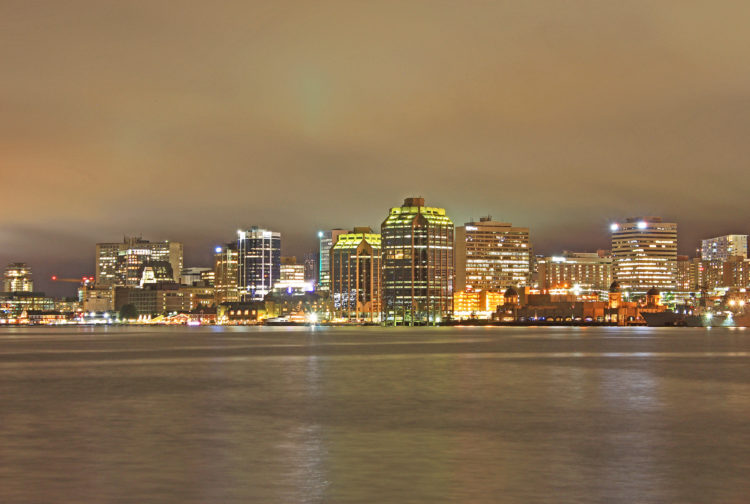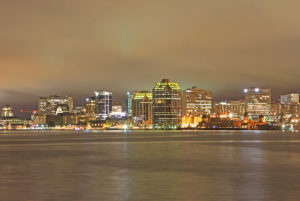 Typically, when we travel east to the Canadian Maritime provinces, we don’t go any further than New Brunswick. I was formerly an advocate of the idea that that particular province was so nice, you didn’t need to go any further. After getting a chance to visit Halifax, Nova Scotia for the first time since I was a child, I’ve thrown that thinking right out the door.
Typically, when we travel east to the Canadian Maritime provinces, we don’t go any further than New Brunswick. I was formerly an advocate of the idea that that particular province was so nice, you didn’t need to go any further. After getting a chance to visit Halifax, Nova Scotia for the first time since I was a child, I’ve thrown that thinking right out the door.
When people talk of Canadians being overly friendly, kind and full of manners, Southern Ontario (especially the Greater Toronto Area) wrongly takes all the credit. Halifax and Nova Scotia truly represent that stereotype. In comparison, those in Ontario (yes, where I live) are rude, heartless and lack a soul. If I had to relocate anywhere in the country, it would be to this lovely area, tucked away in its own little corner.
After taking the ferry from Halifax to Dartmouth’s Alderney Landing, I had a chance to take some night photos of Halifax’s skyline. For full-size, high resolution versions of any of the long exposure photos in the image gallery, simply click on the individual pictures. See below for more information on this great city.
Halifax, Nova Scotia Night Skyline Image Gallery
Halifax, Nova Scotia
Halifax, Nova Scotia is a city of 404,000 residents located on the Atlantic Ocean shore. That population includes Halifax, Dartmouth, Bedford and Halifax County, all part of the Regional Municipality of Halifax which was established in 1996. The city was founded as a town in 1749 and as a city in 1842.
The tallest building in town is the Fenwick Tower, a residential building that was completed in 1971. The Fenwick Tower, with 33 floors, stands at 98 metres or 321 feet in height. However, it is a bit off to the south and inland and cannot be seen in the images in the gallery.
Perhaps the most iconic skyscrapers in the downtown Halifax skyline are the similar looking Purdy’s Wharf Towers. These are the two in the photos above that are right against the waterfront and have roofs lit in green light. Tower 2 is the tallest at 22 floors spread over 88 metres or 289 feet. Tower 1 consists of 18 stories and is 74 metres or 243 feet in height. Completed in 1990, the towers are cooled by an innovative system that circulates sea water throughout the cooling system.
In some photos, a suspension bridge can be seen. This structure is the Angus L. MacDonald Bridge crossing the Harbour from Dartmouth to Halifax. The bridge is 1.3 kilometres in length and is 103 metres or 338 feet in height. The MacDonald Bridge opened in 1955 and will cost you a $1 toll to cross. Beneath the bridge, you will see the docked ships of the Royal Canadian Navy.
Further up the harbour and not visible in the photos is the A. Murray MacKay Bridge. This is a newer, wider bridge that opened in 1970 and can handle three times the traffic that the MacDonald Bridge can. Also a suspension bridge, the MacKay Bridge is 1.2 KM long and 96 metres tall. This bridge opened in 1970 and will also cost you $1 to cross.
Halifax-Dartmouth Ferry
The photos in the image gallery were taken from Alderney Landing, one of three terminals in the Halifax-Dartmouth Ferry system. This ferry began operation in 1752 and is the oldest saltwater ferry system in North America. It is the second oldest saltwater ferry system in the world behind the Mersey Ferry in Liverpool, England.
This is an inexpensive form of transportation across the harbour and alleviates the stress of parking in downtown Halifax. There are two lines with three terminals. Two lines run from Dartmouth to a central point on the downtown shore. Five boats service the routes. This is a must for anyone traveling to Halifax, similar to taking the Staten Island Ferry in New York City.
September, 2017 East Coast Road Trip
We were able to spend two nights in Dartmouth, exploring the urban area, along with a day trip to Lunenburg and Peggy’s Cove. The trip started in Moncton, New Brunswick and moved to the Canso, Nova Scotia area. Canso is located at the northeastern tip of the province and is nearby the radar base where my father served during World War II.
After Halifax, we moved to the Old Shipyard Beach Campground on a point that juts out into the Bay of Fundy between Truro and Amherst, Nova Scotia. The following night, we reached the Quebec City area, staying at a hotel in Levis. Unfortunately, we weren’t able to explore Quebec as we needed to do a lot of driving to get home.
These other places from this short road trip will be covered in more detail in the near future.











